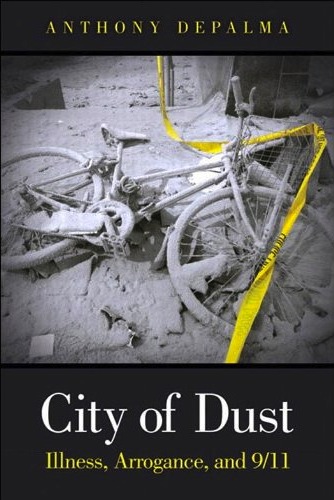City of Dust
Illness, Arrogance, and 9/11
Financial Times Press, October 2010
Anthony DePalma has been reporting for the New York Times on the World Trade Center dust since 2004 — a substance with properties that remain little understood, and which, in many ways continues to cast a cloud over us.
Scientists struggle to understand its chemical composition; medical researchers work to apprehend its effects on our health; epidemiologists assemble data, the significance of which will not be apparent for another twenty years; rescue workers and local residents suffer medical conditions that may or may not have resulted from their exposure; attorneys pursue claims, some of them valid, others opportunistic. Public health officials and politicians made tough decisions based on (or willfully disregarding) scant evidence. And all of us still hold the image of that roiling, apocalyptic cloud in our minds. The dust, in the unexpectedly poetic words of the scientist who studied it most thoroughly, “contains everything we hold dear.”
“The most complete account of 9/11 and its aftermath yet written, City of Dust is a must-read for anyone involved in emergency preparedness and response or in environmental safety and health, for students of government and politics, or for the general reader who wants to understand more about the tragic aftermath of 9/11. Although DePalma’s subject is a difficult one, City of Dust weaves stories about responders’ heroic actions on 9/11, the persisting human health effects caused by their response work, government decision-making then and now, medical detective work, and court cases into a very compelling and readable book.”
-John Howard, M.D., Coordinator, World Trade Center Health Program, U.S. Department of Health and Human Services
“Part chronicle of tragedy and heroism, part detective story, and part legal thriller, this book offers a comprehensive and fearless account of the environmental aftermath of the September 11th attack on the World Trade Center and the public health consequences of the worst environmental disaster in New York City’s history.”
-Eric A. Goldstein, New York City Environment Director for the Natural Resources Defense Council

